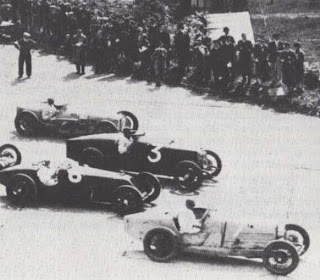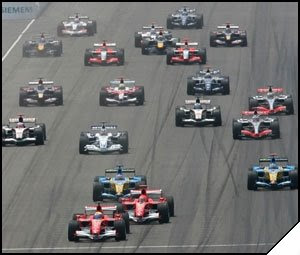Base: Maranello - Italy
Team Principal: Stefano Domenicali
Drivers: K Räikkönen
F Massa
Test Drivers: L Badoer
M Gene
Chassis: F2008
Engine: Ferrari Type 056
Tyres: Bridgestone Potenza
First Season: 1950
World Championships: 15
Highest race finish: 1 (x206)
Pole Positions: 200
Fastest Laps: 212
2007
Win intense battle with McLaren, on track and in court. Kimi Raikkonen takes drivers' title after late-season surge in form. Also wrap up constructors' championship after McLaren found guilty of benefitting from possession of confidential Ferrari data.
Initially play second fiddle to Renault, but Michael Schumacher leads fightback with seven victories in his final Formula One season. Team move ahead of Renault with just three rounds to go, but rare reliability issues see them beaten to title by just five points.
2005
Struggle with new regulations, in particular those requiring tyres to last through qualifying and race. Seven podiums, including one victory at Indianapolis, where Michelin withdrawal leaves six-car field. Finish third in constructors' standings.
2004
Lose just three times in 18 races to take the constructors' crown for the sixth year in a row. An incredible 13 victories for Michael Schumacher sees him take championship number seven.
2003
A much tougher season, but still ultimately unbeatable. A record fifth successive constructors' title, with Michael Schumacher the first man to take six drivers' crowns.
2000 - 2002
Ferrari enter a period of total domination, winning both drivers' and constructors' titles three years in a row.
Michael Schumacher misses six rounds after breaking leg at Silverstone. Team take constructors' championship in the last race but Eddie Irvine just falls short of drivers' title.
Ferrari wins their eighth constructors' championship.
1979
Jody Scheckter wins the drivers' championship - it will be the team's last drivers' title for 21 years.
1975 - 1977
Niki Lauda takes the 1975 drivers' championship and comes back from his horrific accident in 1976, going on to grab a second title for the team in 1977.
1964
John Surtees, a former world motorcycle champion, takes the drivers' crown. He remains the only man to achieve the feat on two wheels and four.
1961
Phil Hill leads Ferrari to the double of both drivers' and constructors' championships.
1958
Mike Hawthorn becomes the third Ferrari driver to win the drivers' championship.
1956
Juan Manuel Fangio wins his fourth drivers' championship with the Scuderia.
1952
Alberto Ascari wins first of two back-to-back drivers' championships in a Ferrari.
1951
Jose Froilan Gonzalez records Ferrari's first victory at the British Grand Prix.


